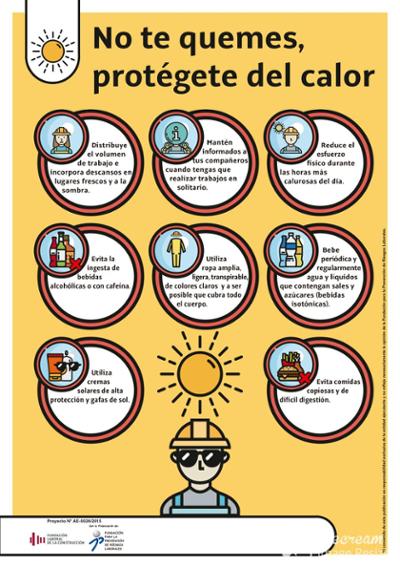

Experts have warned that climate change poses a significant risk to the construction industry.
The webinar, which focused on climate change prevention in the construction sector, aimed to increase awareness and educate companies and professionals on the importance of preventing occupational risks related to extreme high temperatures and the necessity to protect workers. The meeting addressed the implementation of effective preventive measures in the event of high temperatures at the construction site. It was attended by representatives of the construction sector (Confederación Nacional de la Construcción, CCOO del Habitat and UGT FICA), the technical scientific body specialising in health and safety (the Instituto Nacional de Seguridad y Salud en el Trabajo (INSST)), and several construction companies.
In a joint statement, employers and trade unions hailed the signing of the pioneering “Protocol for action in the construction sector in the face of adverse meteorological phenomena related to high temperatures” in 2023 as a “milestone for the sector”. The document, included in the 7th Construction Sector General Agreement, sets out the actions and prevention guidelines necessary to carry out outdoor work. These have been developed through a strong, committed and mature social dialogue and collective bargaining process.
The director of the Labour Department of the Confederación Nacional de la Construcción (CNC) and secretary of the FLC, María José Leguina, highlighted that “[Spain] is one of the most affected by climate change and high temperatures, as is our sector due to the type of work that is carried out.” She also noted that “construction, with the approval of this action protocol, has moved forward” in time.
Personal Protective Equipment (PPE)
Carlos Lozano, the Head of Innovation in Prevention at the Fundación Laboral, mentioned the current market offers in PPE, workwear with ultraviolet sunlight protection, sunglasses, ski masks, helmets with Multi-directional Impact Protection System (MIPS) technology, special sun creams, cooling waistcoats and wristbands, breathable footwear; as well as devices for early detection of heat, real-time monitoring of hydration through urine, or the use of drones with thermographic cameras.





